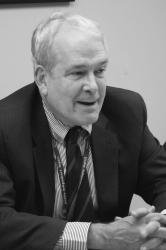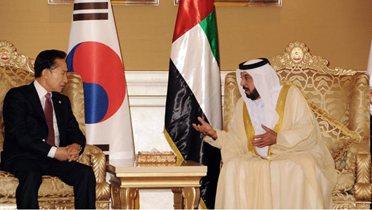EXECUTIVE SUMMARY
Faced with burgeoning electricity demand and the increasing economic and environmental costs of using fossil fuel for power generation, several countries in the Middle East are engaged in, or seriously considering, the development of civil nuclear power. None of the countries examined in this research has a commercial-scale nuclear power plant connected to the grid. The United Arab Emirates (UAE) is the furthest along in the process, having signed a contract for the construction of four nuclear power plants, which are scheduled for completion between 2017 and 2020. Turkey has also signed an agreement for the construction of up to four reactors, while Jordan and Egypt—two countries with significant experience in nuclear research—are in advanced stages of negotiations with potential nuclear vendors. Saudi Arabia has expressed its intention to spend $100 billion on a fleet of 16 nuclear reactors by 2030, and to have two reactors online within ten years. Kuwait and Bahrain have also expressed serious interest in domestic nuclear power programs (although the former’s interest has diminished in the wake of the Fukushima nuclear disaster in Japan), while Qatar and Oman have shown interest in potential regional nuclear-power related initiatives.
As the countries of the Middle East embark on the significant commitment involved in planning, implementing, and operating civil nuclear facilities, they face a range of common challenges. Each of the countries assessed in this study has unique characteristics that make its approach to nuclear-power development specific to its own national circumstances. Some, such as Egypt and Turkey, have pursued civil nuclear power programs for decades and have significant experience with nuclear technology through small-scale research applications. Others, such as the higher-income states of the Gulf Cooperation Council (GCC), are relative newcomers to the field of nuclear power development, but, as demonstrated by the experience of the UAE, have the proven ability to move quickly in the development of strategy and the implementation of nuclear power programs. There is variation between the approaches each of the countries is taking to commercial arrangements and international partnerships; to the structuring of their nuclear-related government departments and regulators; and to their efforts in training personnel and building domestic human capacity. There are also differences in the level of resources, both natural and financial, that each country has to bring to any development plan, and differences between states wishing to pursue their own unilateral programs and those smaller states that see advantages in joint projects.
Despite their differences, however, there are several areas in which the countries in the Middle East have the opportunity to adopt some common approaches and to learn from each other’s experience. Most of the countries have worked in close cooperation with the International Atomic Energy Agency and are using a version of the agency’s report, Milestones in the Development of National Infrastructure for Nuclear Power, in their nuclear power development strategies. Among newcomer nuclear energy countries in the region, including those of the GCC, there is a tendency to articulate the strategy for nuclear power programs in guiding policy documents, which lay out the goals and objectives of the program before work begins. Among those countries that have progressed to the stage of commercial negotiations, there is a clear preference for public-private partnerships with nuclear vendors as well as a desire to involve vendors’ host governments as parties to the agreements. There is an acknowledgement on the part of all countries in the region that building and maintaining the necessary human capacity to run both the nuclear programs and the public sector nuclear-related institutions will be a critical component in the sustainability of the programs.
All of the countries in the study have yet to resolve significant aspects of their nuclear program development strategies. Even the UAE, which is the furthest along in the design and execution of its program, has yet to articulate a strategy for long-term fuel supply, or policies for spent fuel management and legal liability. Among the other countries, there are many more unresolved issues, including those of siting, financing, international agreements, and approaches to sensitive aspects of the nuclear fuel cycle. This paper shows that, while there is no universal model for nuclear power development in the Middle East, there are certain principals and practices that can underpin a responsible approach. These include:
- Articulation of plans for civil nuclear power in the form of policy statements, and as part of a broader energy strategy
- Maintenance of administrative and operational independence of nuclear regulators
- Establishment of long-term human resource development program to ensure the sustainability of nuclear power programs
- Design and implementation of strategies for spent-fuel storage and waste disposal at the outset of nuclear program development
- Selection of nuclear vendors according to a set of clear, transparent criteria, removed from political interference
- Adherence to all of the principal international safety, security and liability conventions
- Integration of meaningful domestic stakeholder engagement into the nuclear power-program development process
As the countries of the Middle East tackle the many technical, institutional, and financial challenges of developing civil nuclear power programs, they have the opportunity to learn from each other and from the international community to ensure that their programs are safe, secure, and sustainable.
The Brookings Institution is committed to quality, independence, and impact.
We are supported by a diverse array of funders. In line with our values and policies, each Brookings publication represents the sole views of its author(s).





